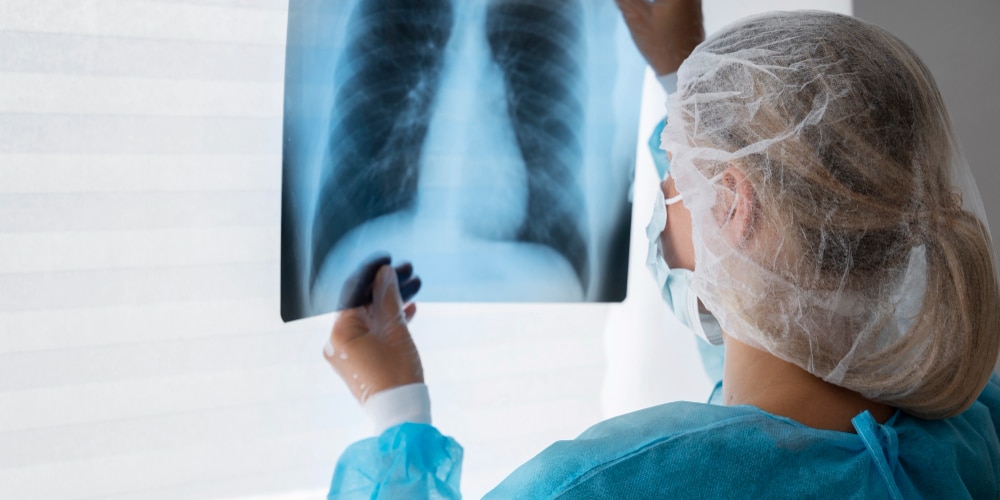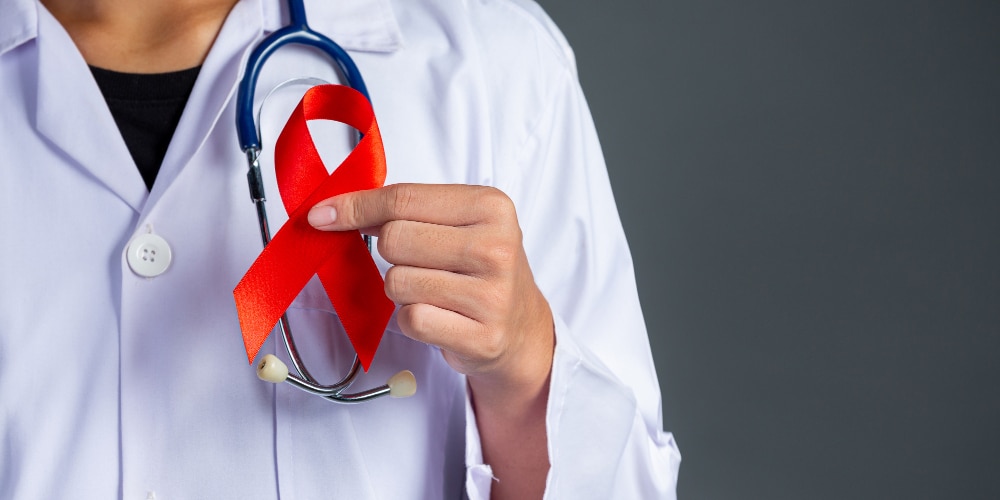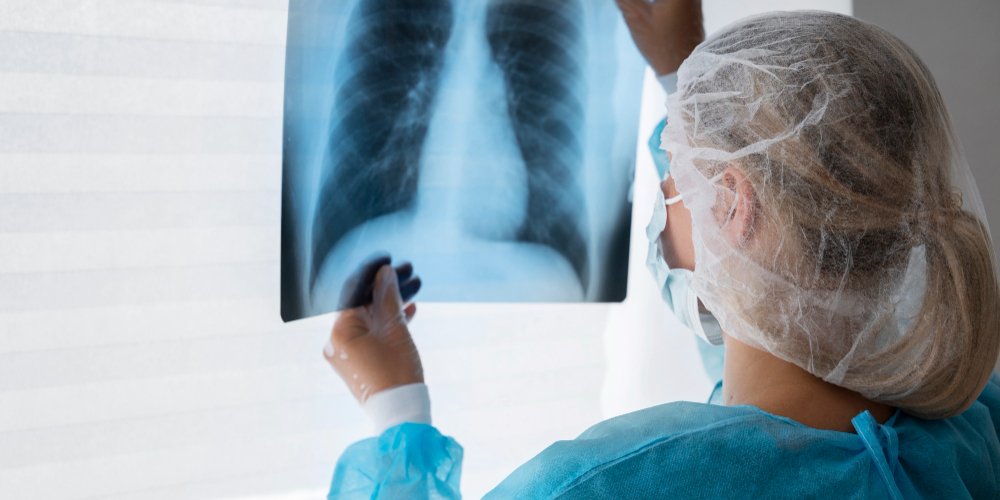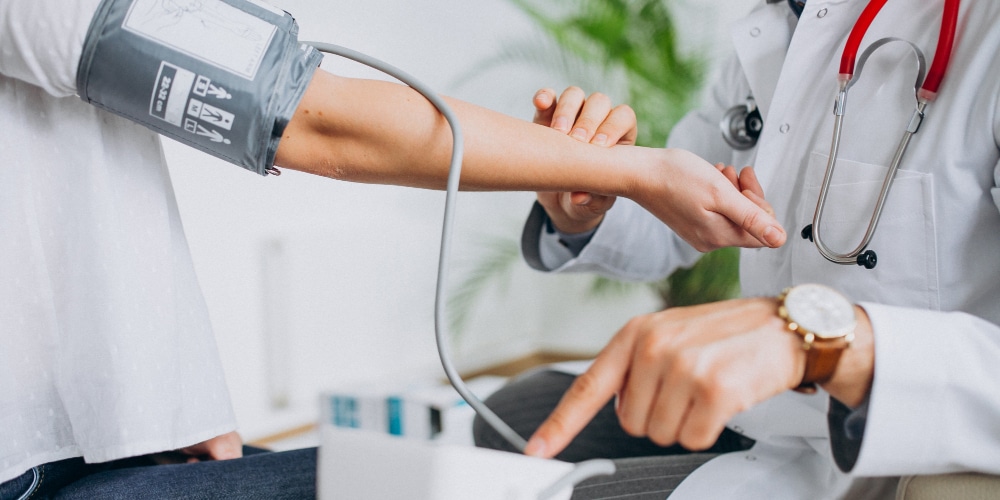Latest
Fact Check: Are asymmetric breasts a sign of cancer?
Breast asymmetry is often normal. However, sudden changes in breast size, shape, nipple appearance, or skin texture warrant immediate medical attention
Author
Author
- admin / 4 months

- 0
- 5 min read

Author
Dr Tanaya Narendra, a doctor, sexual health educator, embryologist, and scientist popularly known as Dr Cuterus with 1.8 million followers on Instagram, in a recent post addressed a common concern: Is one breast being bigger than the other a cause for worry? Her answer—not always. She explained that if asymmetry has always been present, it is perfectly normal since the human body itself is asymmetric. However, sudden changes in breast size, nipple appearance, or skin texture should not be ignored and require medical attention.
Her post, which has received 12.6K likes and over 9,000 shares, has sparked widespread conversation on breast health.
How big a concern is breast cancer?
Breast cancer remains one of the most common cancers worldwide, affecting millions of women—and some men—each year. It is the most frequently diagnosed cancer globally and the leading cause of cancer-related deaths among women. According to the World Health Organization (WHO), around 2.3 million new cases were diagnosed in 2022, leading to approximately 670,000 deaths. The burden is expected to grow: by 2050, the International Agency for Research on Cancer (IARC) projects nearly 3.2 million new cases and 1.1 million deaths annually if current trends continue.
In India, too, breast cancer is a significant concern and is the “most common cancer in women in India and accounts for 27% of all cancers in women,” according to the National Institute of Cancer Prevention and Research under the Indian Council of Medical Research.
“India ranks highest in number of estimated breast cancer deaths (98,337) for the year 2022 among females,” according to a parliamentary response in 2024 as well.

Every year on August 18, World Breast Cancer Research Day is observed to highlight progress in prevention, diagnosis, and treatment. It serves as a global reminder of the urgent need for research and awareness.
What is breast asymmetry?
Breast asymmetry simply means that your breasts are not exactly the same in size, shape, or density. This is extremely common and, in most cases, nothing to worry about. Healthcare providers often note it during examinations to establish what is “normal” for a patient, so that any future changes can be tracked.
Differences can appear in various ways: one breast may be slightly larger, or a mammogram might reveal denser tissue in one breast compared to the other. Medical reports may mention asymmetry, which is an isolated dense area visible in one mammogram view, focal asymmetry, which is a dense area confirmed in two mammogram views, global asymmetry, referring to density covering a large part of one breast (about one-fourth or more), or developing asymmetry which is a new density difference compared with earlier mammograms, which doctors take seriously as it signals change.
Asymmetry often develops during puberty and is written into a person’s genes. Temporary hormonal changes—such as those during menstruation, pregnancy, or hormone therapy—can also make breasts grow unevenly. Other benign causes include cysts (fluid-filled sacs), hematomas (blood collections after injury), or fat necrosis (changes in fatty tissue due to trauma).
Still, doctors advise vigilance. When asymmetry is new or progressive, it warrants further testing. In such cases, additional imaging—like a 3D mammogram, ultrasound, MRI, or even biopsy—may be recommended to rule out underlying disease.
Are asymmetric breasts a sign of cancer?
On their own, asymmetrical breasts are usually not a sign of cancer. Most women have some natural variation, and it is considered part of normal anatomy.
However, research suggests there may be a link between developing asymmetry and increased breast cancer risk, particularly when combined with other factors such as family history and age.
According to another study, women who were healthy at the time of mammography—but later developed breast cancer—demonstrated significantly greater breast volume asymmetry than age-matched women who remained disease-free. Specifically, each 100 ml increase in absolute asymmetry was associated with a 1.5-fold increase in odds of developing breast cancer, while even small relative asymmetries showed a statistically significant effect.
A 2015 study found that women whose breast volume asymmetry ratio exceeded 20% faced a notably higher risk of breast cancer. The odds of cancer in these individuals were approximately 2.18 times higher overall—and 2.01 times higher for women aged 40–69—compared to women with lower asymmetry ratios.
Dr Deep Vora, Oncologist at Zynova Shalby Hospital, Mumbai, explained, “Breast asymmetry is common, as a large number of women have unevenness in the size and shape of their breasts. There is an association between breast asymmetry and breast cancer. Breast asymmetry is generally not a matter of concern. However, if your breast density suddenly changes, then it is necessary to consult a doctor and confirm whether you have breast cancer.”
Dr Vora added that breast asymmetry alone is not typically a risk factor; however, when uneven breasts are accompanied by other signs—such as a lump or thickening of the breast, skin changes like dimpling or redness, nipple changes, nipple discharge, as well as genetic factors, family history, and age—they can indicate the presence of breast cancer.
Speaking about which changes women should be particularly attentive to, Dr Vora said, “Lump or thickening of the breast, skin changes like dimpling or redness, nipple changes, nipple discharge, bloody discharge from the nipple, and breast pain will mean that a woman needs immediate evaluation. It is better to visit the oncologist without any further delay and initiate timely intervention. So, be attentive when it comes to breast health.”
Also read: FACT CHECK: Does wearing bras for long hours increase risks of breast cancer?
(Do you have a health-related claim that you would like us to fact-check? Send it to us, and we will fact-check it for you! You can send it on WhatsApp at +91-9311223141, mail us at hello@firstcheck.in, or click here to submit it online).










